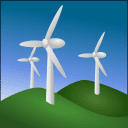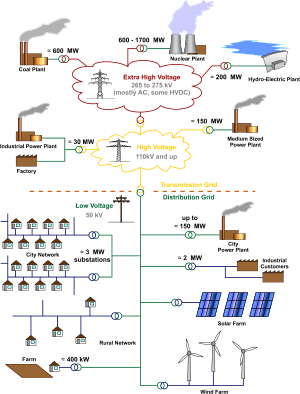
OFF THE COAST OF FUKUSHIMA, Japan — Twelve miles out to sea from the severely damaged and leaking nuclear reactors at Fukushima, a giant floating wind turbine signals the start of Japan’s most ambitious bet yet on clean energy.
When this 350-foot-tall windmill is switched on next month, it will generate enough electricity to power 1,700 homes. Unremarkable, perhaps, but consider the goal of this offshore project: to generate over 1 gigawatt of electricity from 140 wind turbines by 2020. That is equivalent to the power generated by a nuclear reactor.
The project’s backers say that offshore windmills could be a breakthrough for this energy-poor nation. They would enable Japan to use a resource it possesses in abundance: its coastline, which is longer than that of the United States. With an exclusive economic zone — an area up to 200 miles from its shores where Japan has first dibs on any resources — that ranks it among the world’s top 10 largest maritime countries, Japan has millions of square miles to position windmills.
The project is also a bid to seize the initiative in an industry expected to double over the next five years to a global capacity of 536 gigawatts, according to the industry trade group Global Wind Energy Council. The Japanese have lagged at wind turbine manufacturing, which is dominated by European and Chinese makers.
The Japanese government is paying the 22 billion yen, or $226 million, cost of building the first three wind turbines off Fukushima, part of Prime Minister Shinzo Abe’s push to make renewable energy a pillar of his economic growth program. After that, a consortium of 11 companies, including Hitachi, Mitsubishi Heavy Industries, Shimizu and Marubeni, plan to commercialize the project.
“It’s Japan’s biggest hope,” said Hideo Imamura, a spokesman for Shimizu, during a recent trip to the turbine ahead of its test run. “It’s an all-Japan effort, almost 100 percent Japan-made.”
What sets the project apart from other offshore wind farms around the world, consortium officials say, is that its turbines, and even the substation and electrical transformer equipment, float on giant platforms anchored to the seabed. That technology greatly expands potential locations for offshore wind farms, which have been fixed into the seabed, limiting their location to shallow waters.
Go deeper with Bing News on:
Floating Windmills
- Floating tidal energy turbine company to make waves in US waters: 'This milestone underlines growing global appetite'
"There are no single or simple solutions for figuring out the complexities of our future energy supply." Floating tidal energy turbine company to make waves in US waters: 'This milestone underlines ...
- Asso.subsea completes cable installation for offshore wind pilot project
Asso.subsea has partnered with Prysmian Powerlink and successfully completed the cable installation, burial, and protection operations for the a floating offshore wind project.
- New Cranes & Offshore Wind Efficiency
The end may be in sight, but the race for bigger cranes is still having an impact on offshore wind project efficiency.The ...
- Site visit: Inside the O&M base for a floating offshore wind project
Enlit on the road visited Principle Power in Portugal to learn why the O&M phase of a floating offshore wind project is crucial.
- ‘World’s largest’ twin-rotor floating wind platform launched by Chinese firm
The dual hosting capability makes OceanX the world's largest platform by capacity, as claimed by the company in a post.
Go deeper with Google Headlines on:
Floating Windmills
[google_news title=”” keyword=”Floating Windmills” num_posts=”5″ blurb_length=”0″ show_thumb=”left”]
Go deeper with Bing News on:
Off-shore wind farm
- Skanska to turn a Brooklyn marine terminal into an offshore wind port
Following the transformation of South Brooklyn Marine Terminal, the project will get and store offshore wind turbine components. Proposed to be the operational and maintenance hub for Empire Wind 1, ...
- What Everyone Gets Wrong About The ‘Offshore Wind–Whale Death’ Connection
As biologists scramble to explain the recent uptick in whale deaths along the east coast, the real answer might come from another scientific field–psychology.
- Court shuts down offshore wind challenges over endangered whale
Two attempts to sink the first major offshore wind project in the country over its impact to an endangered whale were shot down this week by the 1st U.S. Circuit Court of Appeals.
- Offshore Wind Farms Face Power Challenges
Using computer simulations and observational data of the atmosphere, the team calculated that the wake effect reduces total power generation by 34 percent to 38 percent at a proposed wind farm off the ...
- Inauguration of Japan's largest offshore wind farm: Ishikari project
In a significant stride towards renewable energy, the inauguration of the Ishikari offshore wind project marks a milestone for Japan.
Go deeper with Google Headlines on:
Off-shore wind farm
[google_news title=”” keyword=”off-shore wind farm” num_posts=”5″ blurb_length=”0″ show_thumb=”left”]










